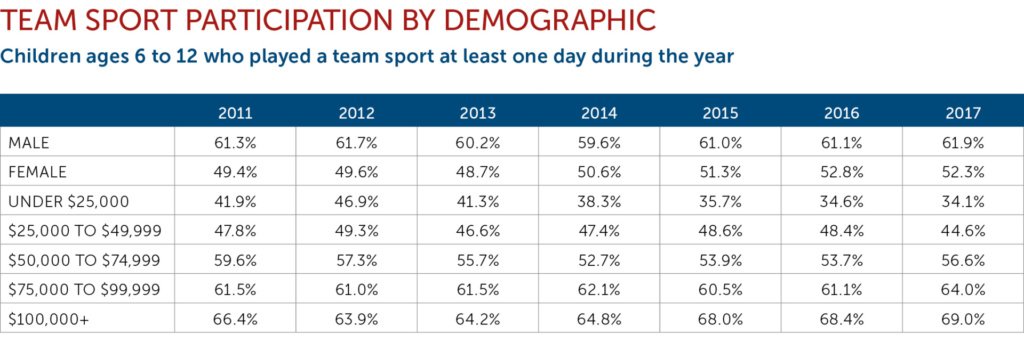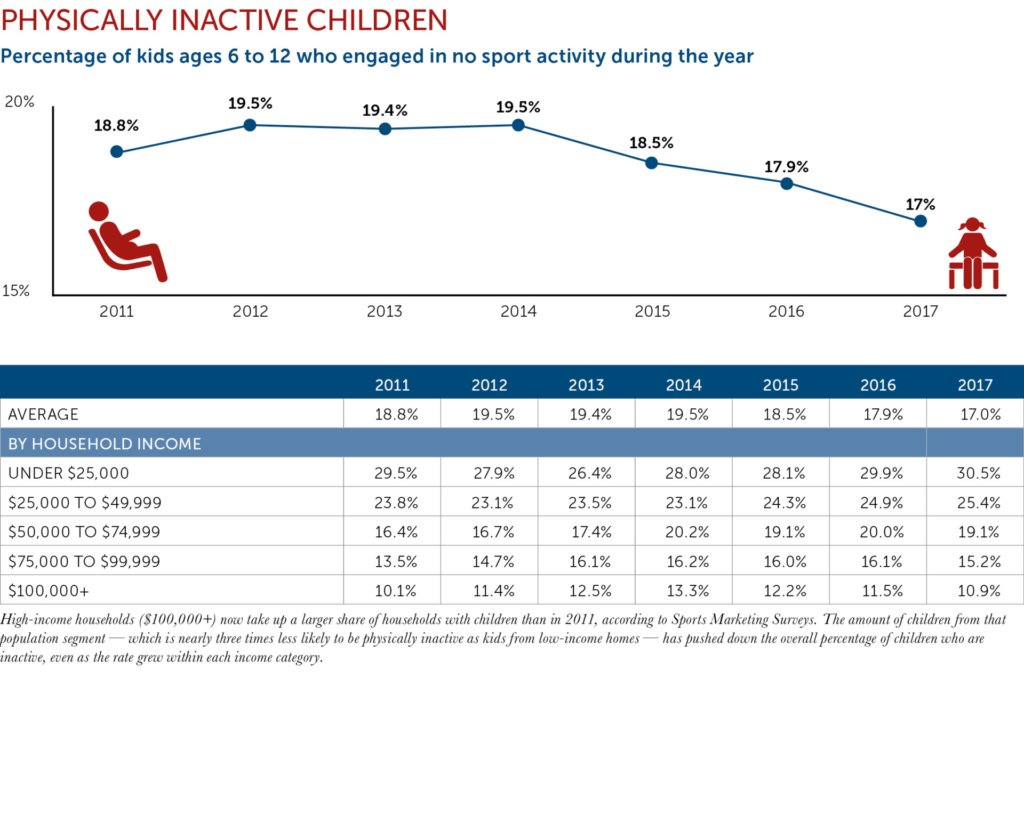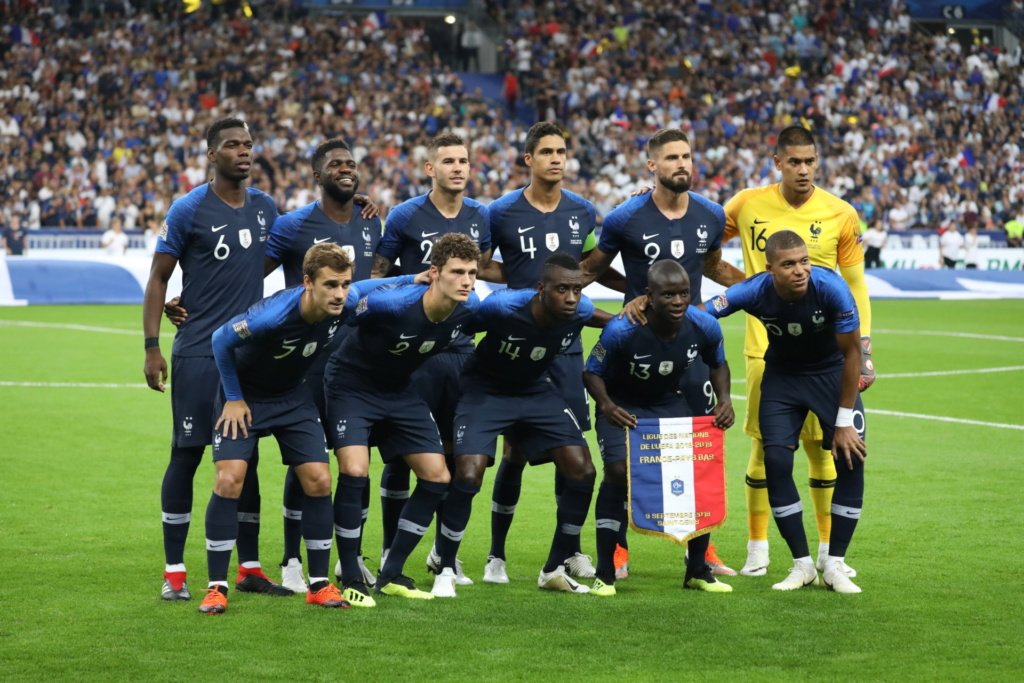In advance of the conference, Sports & Society Program Editorial Director Jon Solomon spoke with NCAA Chief Medical Officer Brian Hainline about the state of football health at all levels. Hainline is also chairman of the Football Development Model Council for USA Football. Below are excerpts from the conversation.
Jon Solomon: When you see high school football players show up on college campuses, what are the predominant health issues you’re finding that universities inherit?
Hainline: One is just overuse injuries, which are common and not specific to football. High school athletes are training year-round and I think there’s just not a deep appreciation for overreach and that there has to be recovery. Another is that some athletes come in and already have in many ways reached their peak of passion, if you will. They’re sort of on that slippery slope of burnout for just having given their all and they’re not ready for the next level.
Solomon: Given these issues, what needs to be done at the high school and youth levels for preventive purposes?
Hainline: It’s something so many of us have been involved in. I don’t think there’s a simple answer. But I wish there was really a whole-hearted investment in the American Development Model (ADM), I like the term, longterm athlete development, because you really have to have a longterm perspective in this. The fundamental shift is getting away from early specialization. Another fundamental shift is there’s plenty of time to get where you need to go and you’re in it for the journey and not for the short-term.
Coaches in this country don’t have a sophisticated sport science background. I’m not saying it’s perfect in other countries, but in other countries to be a coach, you have to be credentialed or certified and it requires a lot of training. Looking at it from another point of view, we’re one of the few countries that doesn’t have a minister of sport. We leave it all to the grassroots level, but there’s not an overarching view in providing all of that. The Amateur Sports Act was supposed to solve all of that with the United States Olympic Committee holding that place, but that never worked out. There was no funding, so every national governing body is left to its own and they’re money-conscious. It’s a complicated issue. It’s societal.
Solomon: You’re now chairing the USA Football council that will oversee implementation of the Football Development Model (FDM). What are the goals for this model and what do you personally hope to see come out of this?
Hainline: The premise is that football is an aggressive, rugged, contact sport. So, from that point of view, it’s in the same category as sports such as ice hockey or soccer or wrestling or men’s lacrosse. These are sports where the body engages with other bodies in a contact or possible collision matter. So, given that and given that the premise of sport is that you want the good to outweigh the risks – and the risks are there for all sports – how do you learn to properly engage your body in the sport of football? What they [the FDM discussions] will not be is, well, is everything flag football or not flag football? Because flag football, when done improperly, carries great risks as well. You have kids diving for flags or this and that.
What’s the best way to engage your body? I don’t have a predetermined answer on what it will be. I think in the ideal world it would be if you’re engaging your body properly, number one, there should be minimal risk of diving or falling or spearing. You have to be lining up your body across somebody else’s body in a manner that makes sense. Number two, the head is not part of what is being lined up. It really is there to think. From that point of view, you’re really trying to minimize any sort of head impact, which is inevitable in every contact collision sport but it can be brought to a minimum.
But I think the challenge for football is how you learn to engage your body properly based on science and emerging consensus.
And finally, the goal is to develop a strong base that is for everyone and then to have athletes that are differential. So, for some people, they just want to play flag football for life, or for others they want to play football for life but it’s more of a modified 7 on 7, and for others, they may be in a developmental pathway where they’re going to play American football at an elite level. It all has all the hallmarks of any ADM. But I think the challenge for football is how you learn to engage your body properly based on science and emerging consensus.
Solomon: This sounds a little different than ice hockey’s ADM, where USA Hockey doesn’t allow checking for kids ages 12 and under. U.S. Soccer banned heading for children ages 10 and under and limits heading in practice for kids ages 11-13. It sounds like youth football will still have a pathway for tackle and a pathway for flag. Am I hearing that correctly?
Hainline: I don’t know. That’s a really open question. For example, if there is a pathway for tackling, does that resemble what we think of as tackling at, say, the NFL or collegiate level? And I suspect that will not be the case. I’m going into this with my own thoughts, but I think it’s more important to learn how to line up with someone and the idea of bringing them down is less important.
Solomon: What are your thoughts on what the right age is for kids to start tackling? (Note: The Sports & Society Program wrote a white paper in 2018 that recommended youth football organizations shift to a standard of flag football before age 14, while also beginning to teach fundamental blocking, tackling, and hitting skills in practice only starting at age 12.)
Hainline: I would compare it to wrestling because it’s is a form of organized tackling, if you will, one-on-one. And it’s not about age so much. Really, it’s about your level of physical development, both from a pubertal point of view and also from a skill development point of view. You don’t have certain types of wrestling techniques in prepubertal kids who aren’t developmentally ready for that.
I think we have to shift the language of what development really means.
I personally think this is where it’s going to get tricky – just assigning a simple age cutoff for tackling in football. When I was 12, I was a scrawny, little kid who could run pretty fast, but then when I realized that there were other 12-year-olds who looked like they were 16, it was a different world and I no longer wanted to compete against those kids. I think we have to shift the language of what development really means. I think that can be done ultimately, but it’s going to take a huge buy-in at a societal level.
Solomon: It was interesting to see Pop Warner recently choosing to eliminate the three-point stance. What did you think of that change? Could we see a day where that might come to high school, college, or the pros?
Hainline: I think it was a very important move. Because when you’re in a three-point stance, the only thing you see ahead of you is someone’s helmet. When you’re talking about youth and the ability to engage, moving from a three-point stance is much more difficult than moving from an upright position where you see everything. So, I applaud Pop Warner for that.
I do suspect that it’s something that’s going to gain momentum. I don’t know to what degree. I think part of that is going to be led by the science, too, because a three-point stance at the Pop Warner level vs. one at the NFL level, I think we need to understand the science of what that means as well.
Solomon: I’m interested in your perspective on the amount of full-contact hitting that should occur at practices. On one hand, some people say dramatically reducing full contact can help reduce concussions or other injuries – at least for skill position players – because you’re not tackling to the ground. Others say they’re not convinced that eliminating tackling reduces the collisions that may lead to long-term brain injuries as long as the offensive linemen, defensive linemen, and linebackers are still unavoidably colliding at the line of scrimmage during drills. What are your thoughts on where science is headed on this question, such as the NCAA’s ongoing CARE Consortium with the Department of Defense that is studying concussions and repetitive head impacts?
Hainline: One of the reasons I’m really thankful that Dartmouth University coach Buddy Teevens is on the [USA Football ADM] council is that he has a lot of insight into that. He didn’t eliminate contact, but he did curtail it and eliminated live tackling. He has a lot of insight. He’s going to bring that to the council.
This is the second year where we’re starting to get much better data about what happens during practice at the line of scrimmage. It’s still not completely analyzed but I think that’s going to drive some of our decision-making, too. I’m really data-driven. I think we have to learn to engage if we’re going to play the sport of football. But I also think we can learn to engage without unnecessary repetitive head impact exposures. That’s the balancing act. I think the data we’re getting on the CARE study will really shed some light on that. We just don’t have enough right now. That being said, in a consensus manner, the NCAA did reduce practice contact in a considerable manner, so much so that the Ivy League had to adjust to our rules because it was more stringent. But I don’t think that’s the end of the discussion.
Solomon: There continue to be questions about the role of strength and conditioning coaches in college football, including the lack of certification standards by the industry. More college players die in off-season conditioning than the combined number from games and practices. We saw it recently when University of Maryland football player Jordan McNair died after a workout and without proper care by the athletic trainers. How does this culture change so offseason workouts shift from performance-based to medical-based?
Hainline: There is going to be an inter-association consensus statement coming out soon and the essence of it is we’re really focusing on what we call transition periods, and we identify those. That’s not just summer to fall. It’s after the winter break, it’s after any sort of injury where you’re off, so you have to acclimatize after every transition period. The work/rest ratio is key and the workouts need to be within the construct of the broad sports medicine framework. And then we’re going to have a checklist for every emergency action plan.
Solomon: I think we too often see football workouts that are built around performance or punitive actions based on the success of the team. Why is it important for strength coaches to practice real exercise science?
Hainline: The strength and conditioning profession grew very, very fast and I think it was seen as a simplistic way to make people tougher. I think that growth occurred more rapidly than sport science-based performance. Performance has as much to do with good health as it does getting stronger. It has as much to do with recovery as anything else.
Jon Solomon is editorial director of the Aspen Institute Sports & Society Program. Follow him on Twitter at @JonSolomonAspen. Learn more about youth sports at www.ProjectPlay.us.
Story originally published here.























